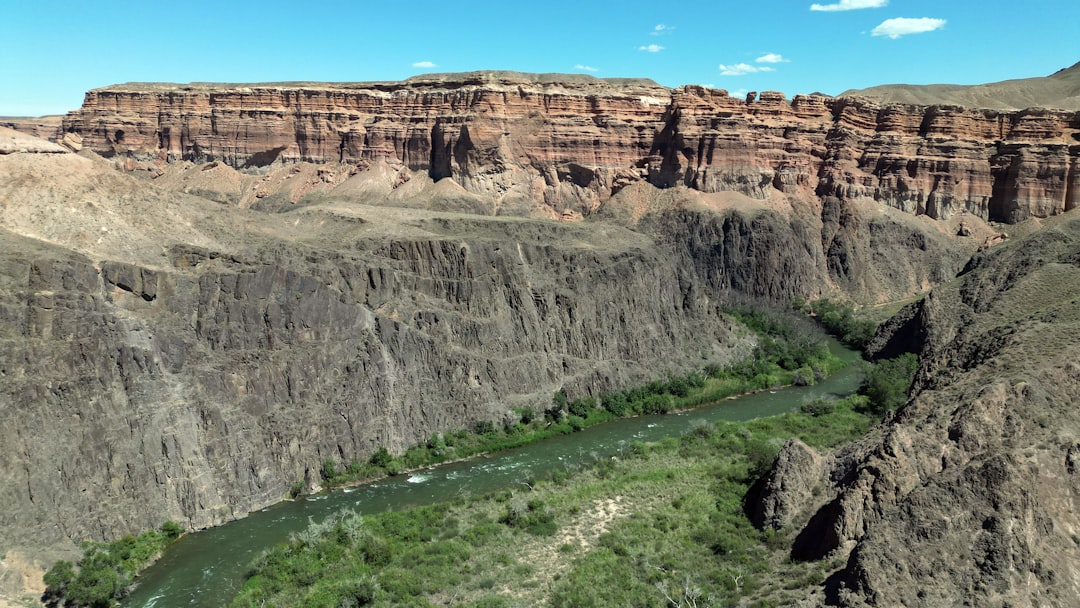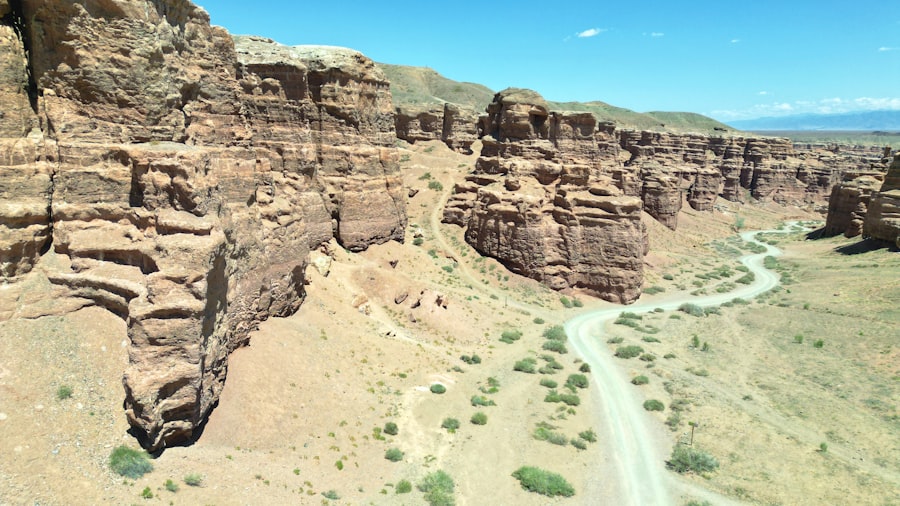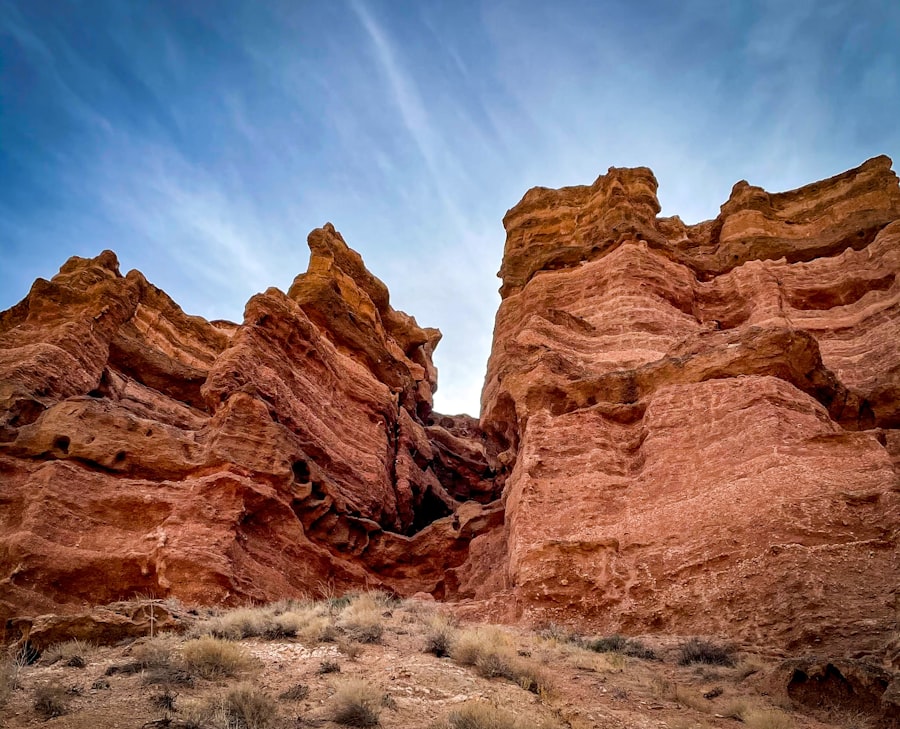
Kazakhstan, the world’s largest landlocked country, occupies a unique geographical position that straddles both Europe and Asia. With an area of over 2.7 million square kilometers, it is the ninth-largest country globally, bordered by Russia to the north, China to the east, Kyrgyzstan, Uzbekistan, and Turkmenistan to the south, and the Caspian Sea to the west. This vast expanse of land is characterized by diverse landscapes, ranging from steppes and deserts to mountains and lakes.
The capital city, Nur-Sultan (formerly known as Astana), was established in 1997 and has since transformed into a symbol of modernity and ambition, showcasing Kazakhstan’s aspirations on the global stage. Kazakhstan’s population is a mosaic of ethnicities, with Kazakhs being the largest group, followed by Russians, Uzbeks, Ukrainians, and others. This rich tapestry of cultures is reflected in the country’s traditions, languages, and customs.
Kazakh is the state language, while Russian is widely spoken and used in business and government. The nation’s history is marked by nomadic traditions, Soviet influence, and a burgeoning independence since 1991. As a result, Kazakhstan presents a fascinating blend of ancient customs and contemporary developments, making it an intriguing destination for travelers seeking both adventure and cultural enrichment.
Key Takeaways
- Kazakhstan is a diverse and beautiful country located in Central Asia, known for its rich history, stunning landscapes, and vibrant culture.
- The country is home to a number of historical and cultural sites, including ancient Silk Road cities, UNESCO World Heritage sites, and traditional nomadic settlements.
- Kazakhstan boasts a wide range of natural landscapes and national parks, from the snow-capped peaks of the Tien Shan mountains to the vast steppes and deserts of the central region.
- The modern cities of Kazakhstan, such as Almaty and Nur-Sultan, offer a mix of futuristic architecture, bustling markets, and vibrant nightlife, making them popular urban attractions for visitors.
- Traditional Kazakh cuisine is a highlight for food enthusiasts, with dishes like beshbarmak, plov, and kazy offering unique culinary experiences that showcase the country’s nomadic heritage.
- Adventure seekers can enjoy a variety of outdoor activities in Kazakhstan, including trekking in the mountains, horseback riding on the steppes, and camping in the wilderness, providing unforgettable experiences for nature lovers.
Historical and Cultural Sites
Kazakhstan is home to numerous historical and cultural sites that offer a glimpse into its rich past. One of the most significant is the Mausoleum of Khoja Ahmed Yasawi in Turkestan, a UNESCO World Heritage Site. Built in the late 14th century, this architectural marvel is dedicated to the revered Sufi poet and philosopher Khoja Ahmed Yasawi.
The mausoleum features intricate tile work and grand domes that reflect the artistry of the Timurid era. Visitors can explore its vast courtyard and admire the stunning craftsmanship that has withstood the test of time. Another notable site is the ancient city of Otrar, which was once a thriving center of trade along the Silk Road.
The ruins of Otrar reveal remnants of its past glory, including fortifications, mosques, and residential areas. Archaeological excavations have uncovered artifacts that provide insight into the daily lives of its inhabitants. The city’s historical significance is further emphasized by its role as a cultural melting pot where various civilizations converged, making it an essential stop for those interested in the history of Central Asia.
In addition to these sites, the Mausoleum of Aisha Bibi near Taraz stands out for its romantic legend associated with it. This 11th-century mausoleum is dedicated to a beautiful woman whose love story has become part of Kazakh folklore. The structure is adorned with exquisite carvings and intricate patterns that showcase the artistry of medieval Kazakh architecture.
Such sites not only serve as tourist attractions but also as vital links to Kazakhstan’s cultural heritage.
Natural Landscapes and National Parks

Kazakhstan’s natural landscapes are as diverse as its cultural heritage, offering breathtaking scenery that captivates nature lovers and adventurers alike. The country boasts several national parks that protect its unique ecosystems and provide opportunities for outdoor exploration. One such park is Altyn Emel National Park, located in the Almaty region.
This park is renowned for its stunning landscapes, including the Singing Dunes—giant sand dunes that produce a melodic sound when the wind blows across them. The park is also home to diverse wildlife, including the endangered Saiga antelope and various bird species. Another remarkable natural wonder is Charyn Canyon, often referred to as Kazakhstan’s Grand Canyon.
Stretching over 154 kilometers, this geological marvel features dramatic rock formations and vibrant colors that change throughout the day as sunlight shifts across the landscape. Hiking trails wind through the canyon, allowing visitors to immerse themselves in its beauty while observing unique flora and fauna along the way. The breathtaking views from various vantage points make it a popular destination for photographers and nature enthusiasts.
The Altai Mountains in northeastern Kazakhstan offer yet another stunning landscape characterized by rugged peaks, alpine meadows, and crystal-clear lakes. This region is not only a haven for hikers but also a significant area for biodiversity. The Katon-Karagay National Park within these mountains is home to rare species such as the snow leopard and golden eagle.
Modern Cities and Urban Attractions
| City | Population | Landmark | Visitor Count |
|---|---|---|---|
| New York City | 8,336,817 | Statue of Liberty | 12 million |
| Tokyo | 9,273,000 | Tokyo Tower | 10 million |
| Paris | 2,148,271 | Eiffel Tower | 7 million |
Kazakhstan’s urban landscape has undergone significant transformation since gaining independence in 1991. Nur-Sultan stands as a testament to this evolution, featuring futuristic architecture and ambitious urban planning. The city is dotted with iconic structures such as the Bayterek Tower, which symbolizes Kazakhstan’s aspirations for growth and development.
Visitors can ascend this tower for panoramic views of the cityscape and surrounding areas, providing a unique perspective on Nur-Sultan’s rapid modernization. Almaty, Kazakhstan’s largest city, offers a blend of modernity and tradition. The city is known for its vibrant cultural scene, with numerous theaters, galleries, and museums showcasing local art and history.
The Central State Museum of Kazakhstan provides an extensive overview of the country’s past through its diverse exhibits. Additionally, Almaty’s Green Bazaar offers an authentic experience where visitors can sample local produce, spices, and traditional foods while immersing themselves in the lively atmosphere. The city also serves as a gateway to outdoor adventures in the nearby mountains.
The Medeu Skating Rink, located at an altitude of 1,691 meters above sea level, is one of the highest ice rinks in the world and attracts both locals and tourists alike during winter months. The nearby Shymbulak Ski Resort offers skiing and snowboarding opportunities against a stunning backdrop of snow-capped peaks. This combination of urban attractions and access to nature makes Almaty a dynamic destination for travelers seeking both cultural experiences and outdoor activities.
Traditional Cuisine and Culinary Experiences
Kazakhstan’s culinary landscape reflects its nomadic heritage and diverse cultural influences. Traditional dishes often feature hearty ingredients such as meat, grains, and dairy products. One of the most iconic dishes is beshbarmak, which translates to “five fingers” in Kazakh—a reference to how it is traditionally eaten with one’s hands.
Beshbarmak consists of boiled meat (usually lamb or beef) served over wide noodles with a flavorful broth poured over it. This dish embodies hospitality in Kazakh culture and is often served during special occasions or family gatherings. Another staple of Kazakh cuisine is kazy, a type of sausage made from horse meat that holds cultural significance among Kazakhs.
Kazy is typically served during celebrations or feasts alongside other traditional dishes like plov (a rice dish with meat and vegetables) and baursaks (fried dough balls). These culinary delights are often accompanied by kumys—a fermented mare’s milk beverage that has been consumed for centuries by nomadic tribes. For those looking to immerse themselves in Kazakhstan’s culinary traditions, participating in a traditional yurt meal can be an unforgettable experience.
Many tour operators offer opportunities to dine in yurts while enjoying live music or traditional performances. This setting not only provides a taste of authentic Kazakh cuisine but also allows visitors to engage with local customs and hospitality practices.
Adventure and Outdoor Activities

Kazakhstan’s vast landscapes provide ample opportunities for adventure seekers looking to explore its natural beauty through various outdoor activities. The country’s diverse terrain caters to different interests—from hiking in mountainous regions to exploring expansive steppes on horseback. One popular activity is horseback riding through the scenic countryside, which allows participants to experience Kazakhstan’s nomadic heritage firsthand while enjoying breathtaking views.
In addition to horseback riding, trekking enthusiasts can find numerous trails across national parks such as Altyn Emel or the Altai Mountains. These trails range from easy walks suitable for families to challenging hikes that lead to stunning vistas or hidden waterfalls.
For adrenaline junkies, Kazakhstan offers thrilling experiences such as paragliding over picturesque landscapes or white-water rafting on its rivers during spring melt-off season. The Ili River near Almaty provides excellent conditions for rafting adventures that cater to various skill levels. Additionally, winter sports enthusiasts can take advantage of ski resorts like Shymbulak or Akbulak during colder months.
Kazakhstan’s unique geography also allows for activities like camel trekking in the desert regions or exploring ancient petroglyphs in remote areas—each offering a distinct perspective on this fascinating country’s history and culture. Whether one seeks tranquility in nature or an adrenaline rush through adventure sports, Kazakhstan’s diverse offerings ensure that every traveler can find their perfect outdoor experience amidst its stunning landscapes.
If you’re intrigued by the diverse landscapes and rich history of Kazakhstan, you might also find interest in exploring another unique destination detailed in a related article. Discover the fascinating aspects of Belarus, a country with its own distinct cultural and natural attractions. From historical sites to beautiful natural reserves, Belarus offers a compelling exploration opportunity. Learn more about what Belarus has to offer by visiting this detailed guide: Belarus World Facts. This article provides insights similar to those you enjoyed about Kazakhstan, making it a perfect next read for geography enthusiasts and travelers alike.
FAQs
What are some interesting facts about Kazakhstan?
– Kazakhstan is the ninth largest country in the world by land area.
– It is the world’s largest landlocked country.
– The country is rich in natural resources, including oil, gas, and minerals.
– Kazakhstan is home to the Baikonur Cosmodrome, the world’s first and largest operational space launch facility.
What are some popular places to visit in Kazakhstan?
– Almaty, the largest city in Kazakhstan, is known for its modern architecture and vibrant nightlife.
– The Charyn Canyon, often referred to as the “Grand Canyon’s little brother,” is a popular natural attraction.
– The Mausoleum of Khoja Ahmed Yasawi, a UNESCO World Heritage site, is a significant historical and architectural landmark in Kazakhstan.
– The Kolsai Lakes, located in the northern Tien Shan mountains, are a popular destination for hiking and camping.
What are some must-see sights in Kazakhstan?
– The Astana Bayterek Tower, a symbol of modern Kazakhstan, offers panoramic views of the city of Nur-Sultan.
– The Big Almaty Lake, located in the Trans-Ili Alatau mountains, is known for its stunning turquoise waters.
– The Aksu-Zhabagly Nature Reserve is the oldest nature reserve in Central Asia and is home to diverse flora and fauna.
– The Tamgaly Petroglyphs, a UNESCO World Heritage site, feature rock carvings dating back to the Bronze Age.



